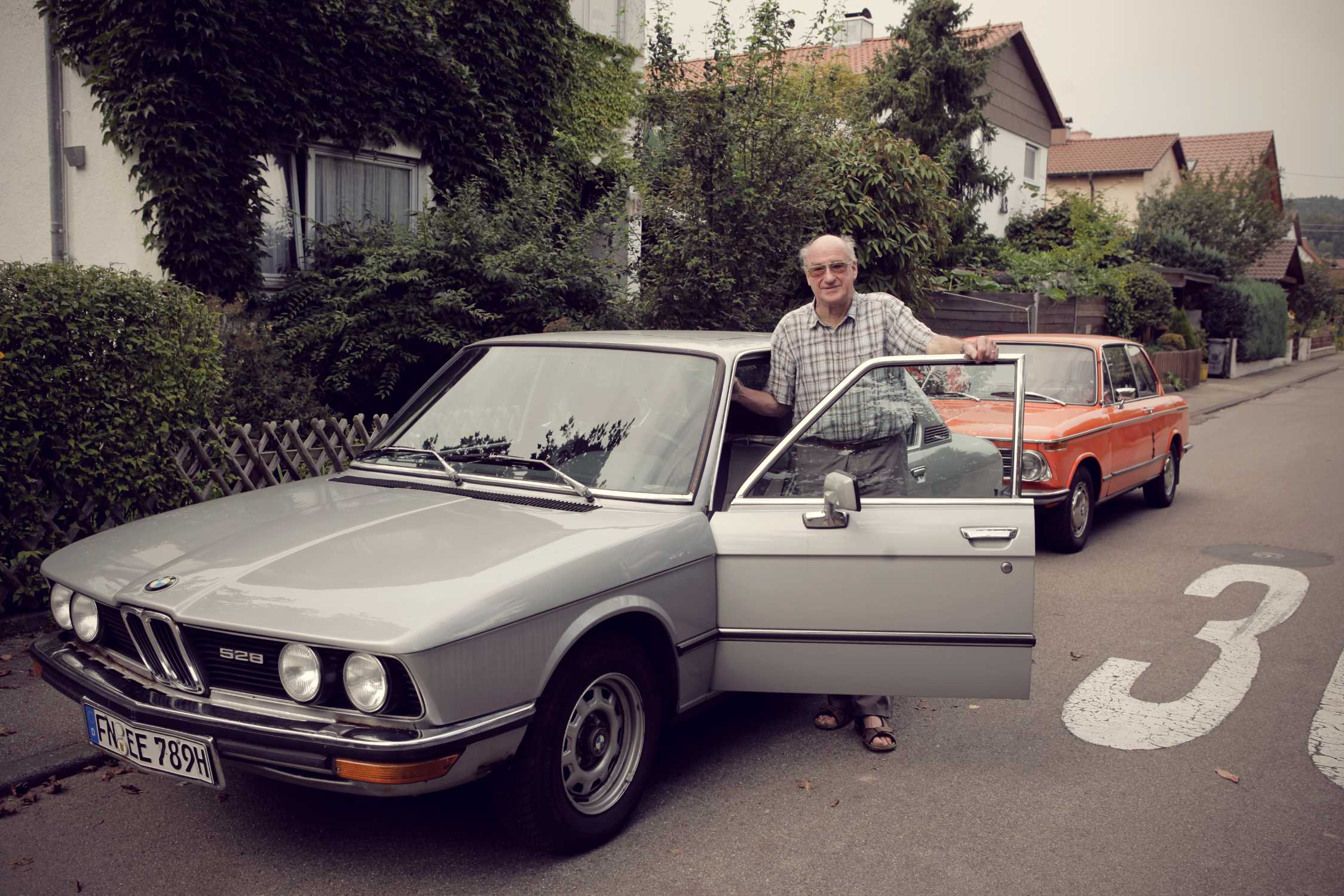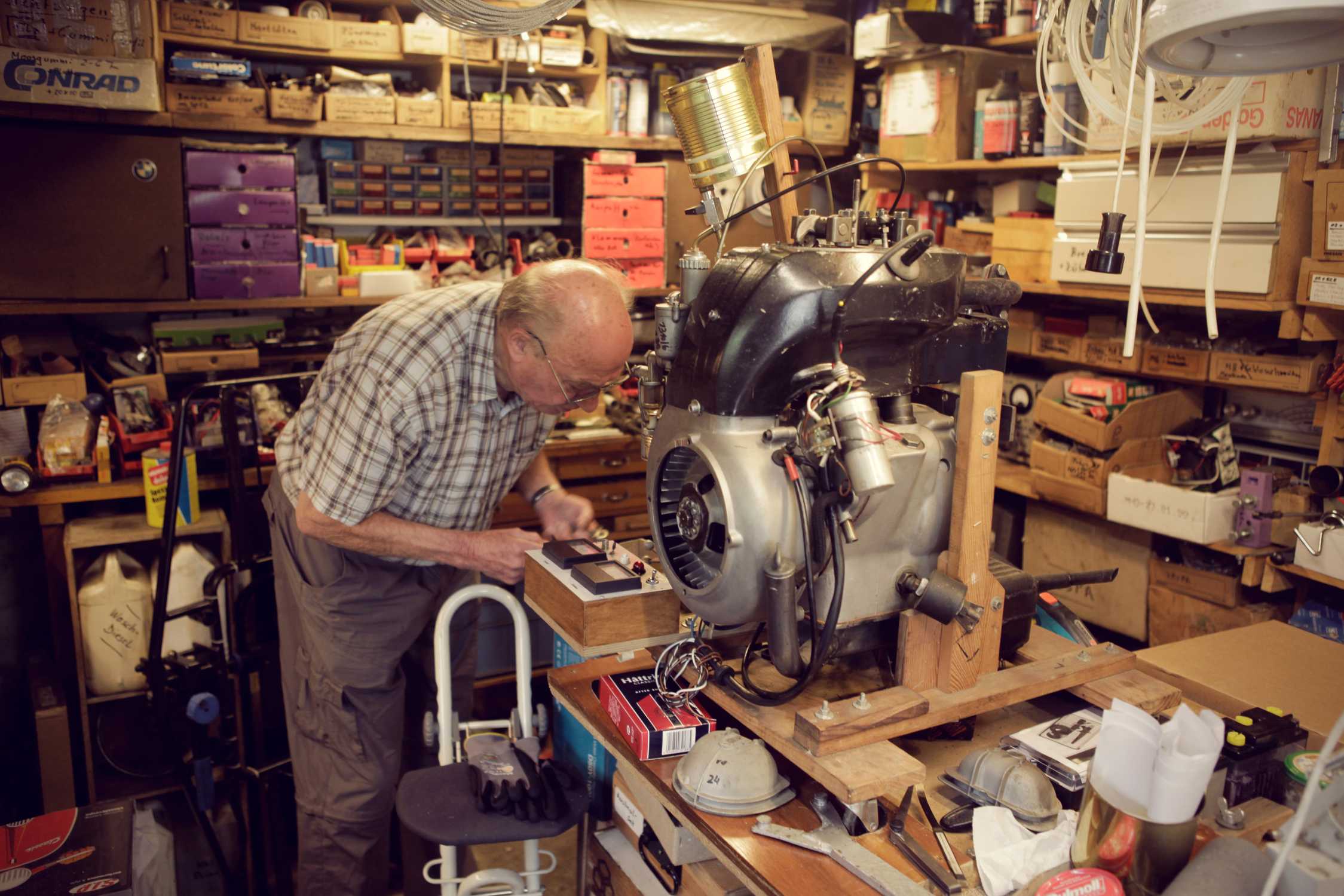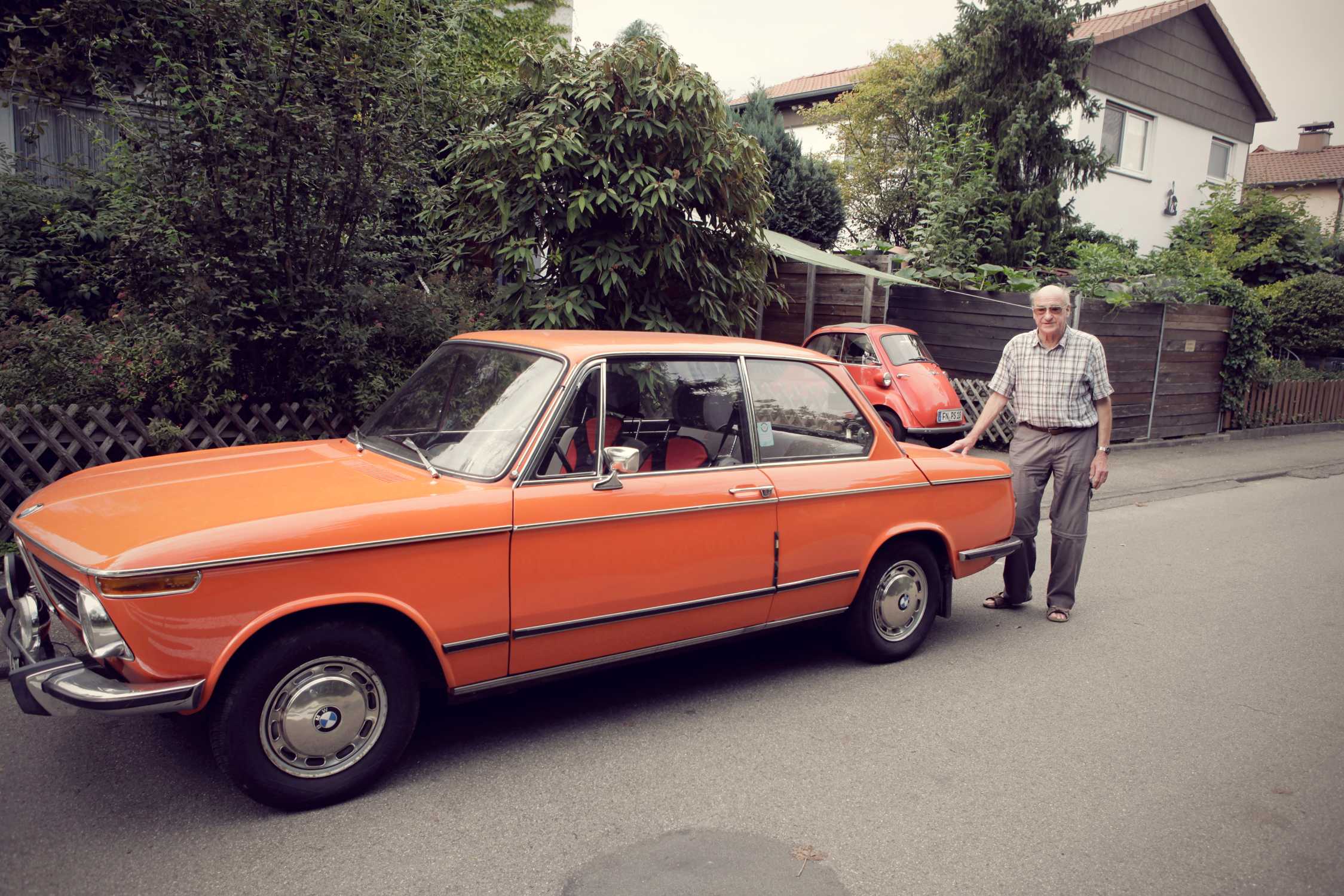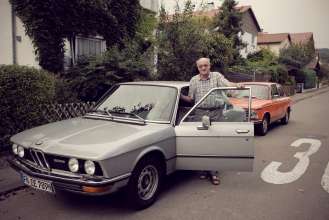Three BMWs sit outside his front door, all of which he’s owned almost his entire adult life, but Peter Strakerjahn staunchly refuses to be separated from any of them. He has owned the Isetta for 51 years, the BMW 2002 for 40 years and the BMW 528 for a no less impressive 30 years. Now 85, Peter Strakerjahn clearly has a soft spot for the brand with the blue and white logo.
He has owned the Isetta for 51 years, the BMW 2002 for 40 years and the BMW 528 for a no less impressive 30 years. Now 85, Peter Strakerjahn clearly has a soft spot for the brand with the blue and white logo.
“I found the Isetta by chance,” relates Strakerjahn. “In 1963, the aircraft plant in Überlingen where I worked at the time as a young electrical engineer put it up for sale. The company had been using the Isetta for messenger deliveries, but unfortunately the courier who drove it back and forth between the three company offices got into a bad accident, so they bought him a different car. I imagine they wanted the courier to have a ‘proper car’. The Isetta was repaired, and I bought it. I had been riding a Vespa up until then – with my young son on the child seat in front of me and my wife on the back seat carrying our little daughter in her arms. You could still do that in the early 1960s. But then having a roof over our heads was really nice, even if it was only a small one.”
The young household soon got bigger and needed more space. A Ford P5 estate car became the vehicle of choice for the now six-strong family. But soon afterwards the head of the household was offered an engineering job in Munich. “I rented a small flat and drove home to Lake Constance at weekends. As I was commuting I wanted a sporty car. After a brief interlude with an Opel GT, which unfortunately ended up on its roof on a country road, I looked at a few different cars – a Ford Capri, an Alfa Romeo – but the only one that really caught my eye was the BMW 2002. So in 1974 I bought a one-and-a-half-year-old demo model.”
Strakerjahn drove his 02 Series for ten years, not just to commute between Überlingen and Munich, but also on business trips to Italy, Bonn and England, racking up well over 400,000 kilometres in the process. But as the years accumulated, so did his wish for a little more luxury. Browsing through the newspaper in 1984, he came across an ad for what would eventually become his future BMW 528. Although seven years old with a fair few kilometres under the bonnet already and fitted with a relatively thirsty carburettor engine, the BMW was nevertheless in great shape and boasted an automatic transmission, air conditioning, automatic windows and a sunroof – just the amenities that make for a more comfortable driving experience. And thus the 528 became Strakerjahn’s primary vehicle for business trips and commuting over the last decade or so of his professional life.
Meanwhile, the Isetta was eking out a wallflower existence. Year-round, all-season use combined with minimal rust protection had caused the body to deteriorate substantially: “To slow down you had a choice: either step on the brake or put your foot through the rusted-out floor right onto the road,” he recalls with a grin. ”Finally things reached a point of no return; by 1986 the car was nowhere close to safe for everyday driving. So I took the Isetta off the road and stored it upright behind my garage. My eldest son said: “Dad, that thing is 27 years old, why don’t you just get rid of it?” To which I replied: “You’re more than 27 years old – and I’m certainly not going to get rid of you!” That pretty much ended the discussion.
In the mid-1990s, the 02 also began to flag, its engine showing signs of serious damage. “My youngest son Martin and I took the engine apart, and we found a crack in the engine block between the second and third cylinders. We cobbled together a new engine from three old ones, and finished it off with a brand new cylinder head on top.” After nearly half a million kilometres, that’s par for the course.
The 5 Series boasted an equally impressive number on its odometer, and soon it too began emitting blue-tinged exhaust fumes and demonstrating reduced engine performance. But for this car, Peter’s son Martin happened on an unusual bargain – at a garage liquidation sale, the trained master mechanic specialising in classic cars picked up a new original engine at a rock-bottom price.
Ten years ago, the not-so-retired engineer decided to restore the Isetta to roadworthiness following its nearly 20-year stint sitting upright behind his garage. “The floor was completely rusted through, I had to completely reconstruct the body up to a height of about 30 centimetres.” He did all the welding himself, but that was only the beginning. “When I was driving the Isetta on a daily basis, I had to change the rubber-mounted axle supports twice a year. I didn’t want to go through that again, so I designed an axle support that used ball bearings instead. Just to be on the safe side, I took a prototype of the new device over to our local vehicle inspection station for them to have a look, and the man in charge – who was a classic car lover himself – got so excited about it that he kept dropping by during the one-and-a-half year restoration period. So getting the car re-registered ended up being a piece of cake.”
Peter Strakerjahn’s BMWs aren’t really his hobby; instead, he views them as highly functional vehicles suitable for everyday driving, well-oiled machines that – given proper care and regular maintenance – can operate successfully for an entire lifetime. In the wrong hands, the BMW 528 in particular would have been scrapped for spare parts years ago. Instead, today it can proudly claim to be what US newspaper ads commonly call a “survivor”.




